Electronics News
Archive : 3 November 2016 год
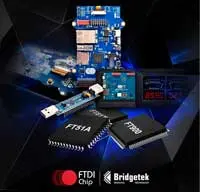 Looking to provide better service to customers in a range of sectors,
Looking to provide better service to customers in a range of sectors,
FTDI Chip has spun out its MCU, graphic controller and interface interests into Bridgetek. The move means that FTDI will now focus on its USB interconnection business.
“By spinning out our MCU and HMI divisions into a new brand, we will be much better positioned, strategically and logistically,” said FTDI’s CEO Fred Dart. “Rather than being too diluted to be truly effective, FTDI and Bridgetek will be able to bring real value to their customers.”
Although its headquarters will be in Singapore, Bridgetek will have offices in Glasgow and Taipei, allowing it to cater to the needs of customers around the world.
Author
Graham Pitcher
Source: www.newelectronics.co.uk
 Using scrap metal and a common household chemical, a team from Vanderbilt University has developed a high performance battery.
Using scrap metal and a common household chemical, a team from Vanderbilt University has developed a high performance battery.
“The tons of metal waste discarded every year could be used to provide storage for renewable energy instead of becoming a burden for waste processing plants and the environment,” said assistant professor Cary Pint.
Pint and his team used scraps of steel and brass – two of the most commonly discarded materials – to create a battery that can store energy at levels comparable to those of lead-acid batteries while charging and discharging at rates comparable to supercapacitors.
According to the team, the performance is enabled by anodisation. When the metals were anodised using a common household chemical and residential electrical current, the researchers found the metal surfaces were restructured into nanometre-sized networks of metal oxide that can store and release energy when they react with potassium hydroxide, a water based liquid electrolyte.
These nanometre domains are said to explain the fast charging behaviour, as well as the battery’s stability: the battery was tested for 5000 consecutive charging cycles – the equivalent of more than 13 years of daily charging and discharging – after which, it retained more than 90% of its capacity.
The team's next step is to build a full-scale prototype battery suitable for use in energy-efficient smart homes.
“We’re forging new ground with this project,” Pint concluded. “It’s a completely new way of thinking about battery research and it could bypass the barriers holding back innovation in grid scale energy storage.”
Author
Graham Pitcher
Source: www.newelectronics.co.uk
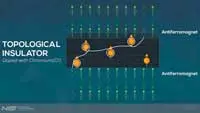 A research team from UCLA says it has made a major step forward in developing and using topological insulators, which conduct electricity on their surface, but not in their interior.
A research team from UCLA says it has made a major step forward in developing and using topological insulators, which conduct electricity on their surface, but not in their interior.
Magnetised topological insulators could improve the energy efficiency and operating speed of computers ‘dramatically’, says the team, which offers two ways to do this. One way infuses magnetic materials into the topological insulator; the other stacks thin layers of alternating magnetic materials between the insulators.
While both methods magnetise the topological insulator, both also can disrupt the insulator’s desirable properties if the magnetism is too strong. Instead of stacking alternating layers, the team used an antiferromagnetic material in conjunction with the topological insulator, effectively cancelling out the overall magnetism. However, one atomic layer at the interface remains magnetic and this can be exploited for data storage.
“Using antiferromagnetic materials with topological insulators provides a new avenue to bring the latter material into applications, in addition to exploring new physics,” said Professor Kang Wang.
“When we combined topological insulators with antiferromagnetic layers, we found they could operate at 90K,” said post doctoral researcher Qing Lin He. “This is an enormous opportunity for opening up a totally new direction. While it’s still not room temperature, it’s a very promising way forward.”
Topological insulators may also find application in quantum computers as, when they conduct electricity, all electrons flowing in one direction have the same spin direction.
Collaborators include researchers from NIST, Stanford University and the Beijing University of Technology.
Author
Graham Pitcher
Source: www.newelectronics.co.uk
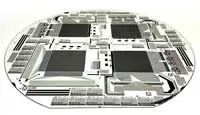 A European health consortium is developing a set of low radiation, low cost, flat panel X-ray detectors that use novel photonics technology to make diagnosis safer for patients and medical staff.
A European health consortium is developing a set of low radiation, low cost, flat panel X-ray detectors that use novel photonics technology to make diagnosis safer for patients and medical staff.
While X-ray is a useful diagnostic tool, it can be harmful to the body. Although the level of radiation can be reduced, this has come at the expense of the image resolution.
Two types of X-ray technology exist – high resolution (direct converters) or low radiation dose, (indirect converters).
Direct converters convert X-Rays directly into electrical signals, while indirect converters make use of scintillators, which emit light upon X-Ray irradiation. This light is converted into electrical signals by a photodetector.
Combining these advantages, the DiCoMo – Direct conversion hybrid-organic X-ray detectors on metal oxide backplane – project is developing a digital X-Ray detector capable of images that rival the resolution of a 16Mpixel photograph.
Current indirect detectors generate light in all directions as soon as an X-ray photon is absorbed, hitting a large number of pixels on the photodetector array and creating limited spatial resolution. Project coordinator Dr Sandro Tedde of SIEMENS HEALTHINEERS explains: “The result is like a blurred photograph. In indirect converters, there is always a compromise between resolution and sensitivity.”
DiCoMo is said to feature innovations in the frontplane – the part of the device that converts X-rays into electrical signals – and the backplane, which stores and drives the signals from the pixels to the readout circuitry and digital image reconstruction.
The new detector works by getting an indirect converter to behave in the way a direct converter is expected to perform. The DiCoMo technique sees a scintillator embedded into the photodetector, producing the high spatial resolution typically seen in direct converters.
DiCoMo’s second innovation is in the backplane technology, which has been developed by TNO and IMEC. Here, active pixels made from metal-oxide thin-film transistors amplify the charge within the backplane pixel itself. A customised readout chip developed by ICSense is said to enable high frame rates.
“Similar to CMOS camera technology, where millions of tiny photo sensors and transistors create an electrical current when exposed to light, our active pixel technology gives us a ‘louder’ signal at a much higher frame rate than ever before” says Dr Tedde.
“The fastest flat panel X-Ray detectors deliver around 60frame/s, whereas DiCoMo aims to capture 130frame/s, permitting a physician to not only examine vital organs in high resolution, but also moving images in slow motion.”
DiCoMo came up with the solution of using a hybrid X-ray absorption and conversion layer by embedding scintillating micro-particles into an organic semiconductor photo detecting bulk, in a pattern resembling the raisin parts in a raisin loaf. This prevents the light from being widely spread over several pixels since the light to electrical signal conversion occurs in the same pixel where the X-ray photon has been absorbed preserving the spatial information.
Coordinated by SIEMENS HEALTHINEERS, the project partners include BASF Switzerland, imec, TNO, ICsense and MorphwiZe.
Author
Graham Pitcher
Source: www.newelectronics.co.uk
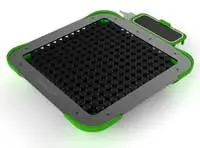 Specialist in mid-air touchless haptic technology, Ultrahaptics, has introduced a development platform that allows companies to evaluate and appreciate the benefits of gesture controls enhanced by tactile feedback sensations. The UHDK5 TOUCH Development Kit provides a complete hardware and software package with an architecture that can be embedded in product designs, from prototypes through to volume production.
Specialist in mid-air touchless haptic technology, Ultrahaptics, has introduced a development platform that allows companies to evaluate and appreciate the benefits of gesture controls enhanced by tactile feedback sensations. The UHDK5 TOUCH Development Kit provides a complete hardware and software package with an architecture that can be embedded in product designs, from prototypes through to volume production.
“Our haptic technology enables product designers to bring responsive gesture recognition to their customers in a way never previously imagined,” said David Owen, VP Business Development at Ultrahaptics. “Our aim in introducing this development kit is to speed up the evaluation and product development cycle and allow our customers to bring their differentiated product designs to market even quicker.”
Touchless controls are said to be hygienic for use in medical, industrial and domestic environments, such as hospitals, kitchens and restrooms, while their use for automotive infotainment and dashboard functions enhances safety, allowing drivers to keep their eyes on the road.
According to the company, the development kit works straight out of the box. For developers, the embeddable architecture (using an ARM Core plus FPGA) is said to ease integration and provides a production ready design that minimises BOM cost. Similarly, the provision of APIs, coded using the widely adopted C++ programming language, allows software engineers to adapt their application interfaces with customised sensations.
Author
Peggy Lee
Source: www.newelectronics.co.uk
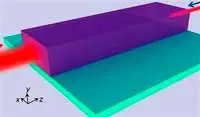 A group of researchers from University at Buffalo, California Institute of Technology and City University of New York has demonstrated a way to control light with light using one third – in some cases, even less – of the energy typically required. The advancement, coupled with other developments, could lead to more powerful, energy-efficient chips and other optics-based technologies.
A group of researchers from University at Buffalo, California Institute of Technology and City University of New York has demonstrated a way to control light with light using one third – in some cases, even less – of the energy typically required. The advancement, coupled with other developments, could lead to more powerful, energy-efficient chips and other optics-based technologies.
"Typically, symmetry connotes harmony and beauty. But not in this case. We've developed technology – an asymmetric metawaveguide – that enables a weak control laser beam to manipulate a much more intense laser signal," says Liang Feng, assistant professor at Buffalo University.
Light-light switching typically requires strong nonlinearity where intense laser fields route and direct data flows of weak power, leading to a high power consumption that limits its practical use.
In this study, the experimental demonstration of a metawaveguide – a tiny rectangular box made of silicon – operates in the opposite way in a linear regime, where an intense laser field is interferometrically manipulated on demand by a weak control beam with a modulation extinction ratio up to 60dB. This asymmetric control is said to result from operating near an exceptional point of the scattering matrix, which gives rise to intrinsic asymmetric reflections of the metawaveguide through interplay between index and absorption.
Pic: The image shows a weak control beam (narrow red line, far right) and a more intense laser signal (larger red line, far left) within an asymmetrical metawaveguide. Credit: University at Buffalo.
Author
Peggy Lee
Source: www.newelectronics.co.uk

